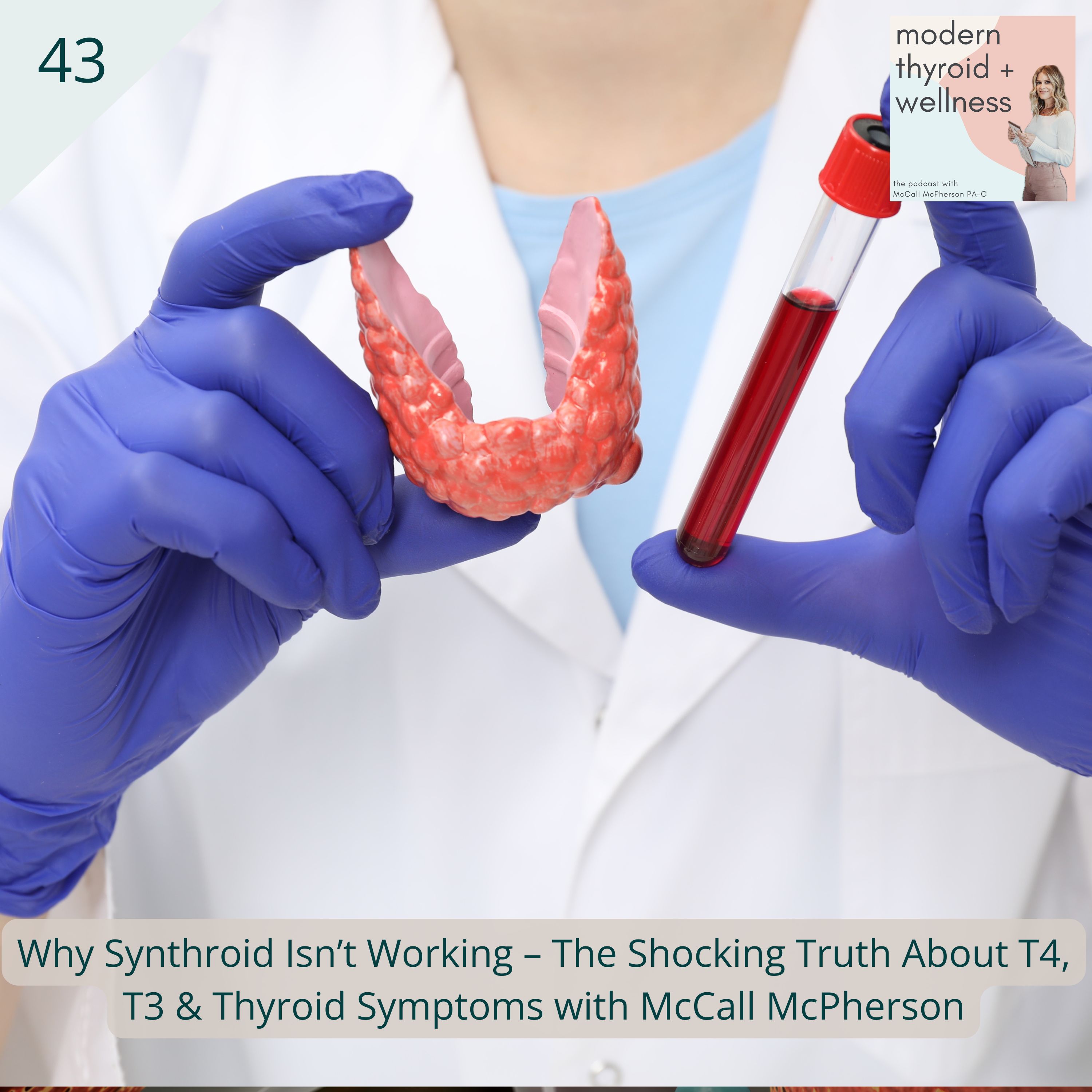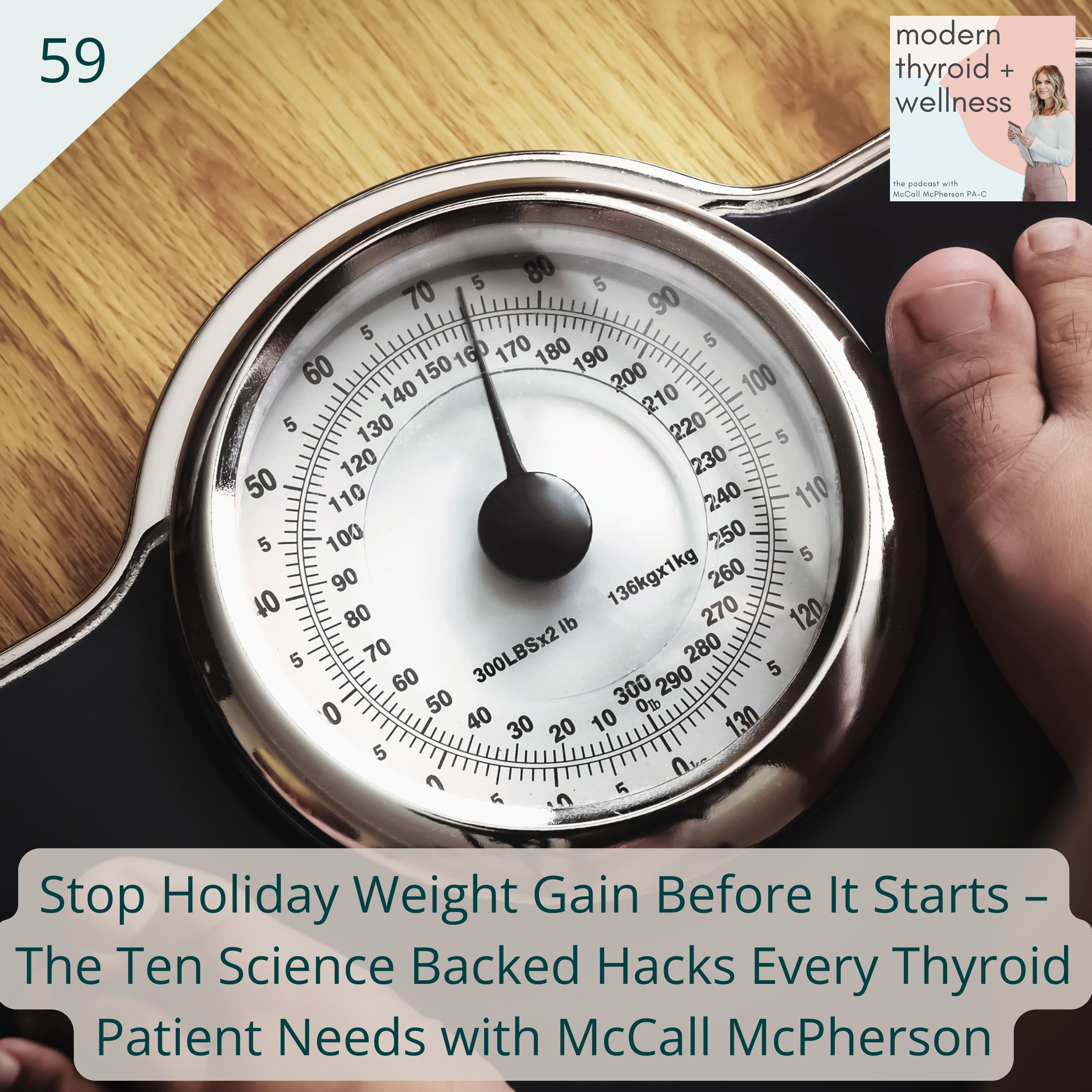Why Levothyroxine Often Fails: A Deep Dive into Thyroid Treatment and the Path to True Wellness
Host: McCall McPherson
Thyroid disorders are among the most common endocrine issues worldwide, and in the United States, nearly 89% of those diagnosed are prescribed levothyroxine-based medications such as Synthroid, Tirosint, or generic levothyroxine. Yet, a staggering number of patients continue to struggle with persistent symptoms—fatigue, weight gain, brain fog, and more—despite “normal” lab results. Why does this happen, and what can be done about it?
In this comprehensive post, I’ll break down the main themes from a recent podcast episode where I explore the limitations of levothyroxine-only treatment, the nuances of thyroid hormone physiology, and actionable steps for patients and clinicians seeking better outcomes. Whether you’re a patient, a loved one, or a healthcare provider, this guide will empower you with the knowledge to navigate the complex world of thyroid health.
The Flawed Premise of Levothyroxine Treatment
Understanding Thyroid Hormone Physiology
- Levothyroxine (T4) is a synthetic form of the inactive thyroid hormone. Think of T4 as crude oil: it’s not directly usable by the body and must be converted into T3, the active hormone that powers metabolism, energy, and overall health.
- T3 (Triiodothyronine) is the “gasoline” your body needs. Only T3 can activate thyroid hormone receptors and drive the physiological processes that keep you feeling well.
The Problem:
The standard medical approach assumes that everyone can efficiently convert T4 (from medication or the thyroid gland) into T3. However, clinical experience and research show that poor conversion is widespread. Many patients, even with adequate T4 levels, cannot produce enough T3, leaving them symptomatic and frustrated.
Symptoms of Poor T4-to-T3 Conversion—Even with “Normal” Labs
Recognizing the Signs
Patients with impaired conversion often experience:
- Fatigue and low energy
- Brain fog and cognitive difficulties
- Weight gain or inability to lose weight
- Dry skin, brittle nails, and hair loss
- Low libido
- High cholesterol
- Cold intolerance
- Thinning of the outer eyebrows
- Blood sugar issues (prediabetes or diabetes)
Key Insight:
No matter how much the levothyroxine dose is increased, these symptoms persist if the body cannot convert T4 to T3. The root cause—insufficient active hormone—remains unaddressed.
Why Standard Thyroid Lab Tests Can Be Misleading
The Pitfalls of TSH and T4-Only Testing
- TSH (Thyroid Stimulating Hormone) and T4 are the most commonly ordered labs.
- When you take T4-based medication, your blood T4 rises, which signals the brain to lower TSH. This feedback loop can make it appear as though your thyroid function is normal or even overactive.
The Reality:
If you’re a poor converter, your T3 remains low, but this is rarely tested. Doctors see “normal” TSH and T4 and assume you’re well, even as symptoms persist.
Visual Analogy:
- Imagine a garage full of crude oil (T4) but an empty gas tank (T3). The car won’t run, no matter how much crude oil you have.
Actionable Advice:
- Request comprehensive thyroid testing: Insist on free T3, reverse T3, and thyroid antibodies in addition to TSH and T4.
- Understand optimal ranges: Standard lab “normals” are often too broad. Seek optimal, not just normal, levels.
The Three Stages of Levothyroxine Treatment
Recognizing the Pattern
Most patients on levothyroxine experience a predictable cycle:
1. Initial Improvement
- What happens: T4 levels rise, and patients feel better for a short period.
- Why: The initial boost provides a slight increase in hormone availability.
2. Plateau and Symptom Return
- What happens: After 3–6 months, the brain senses high T4 and lowers TSH, reducing natural thyroid stimulation. T4 and T3 levels settle, and symptoms return.
- Why: The body’s feedback loop suppresses its own thyroid production, and poor conversion persists.
3. Reverse T3 Accumulation and Worsening Symptoms
- What happens: Over 6–18 months, reverse T3 (an inactive form) builds up. It blocks T3 receptors, worsening symptoms.
- Why: Reverse T3 competes with T3 but does not activate receptors, effectively “jamming” the system.
Cycle Repeats:
Doctors may increase the levothyroxine dose, leading to temporary improvement, but the cycle soon restarts.
The Myth and Reality of T3 Therapy
Debunking Common Fears
Medical Myth:
T3 therapy is dangerous, increasing the risk of heart attacks, strokes, osteoporosis, and cardiovascular events.
What the Research Shows:
- Higher normal T3 levels are associated with:
- Lower mortality
- Reduced osteoporosis risk
- Better employment and quality of life
- Higher T4 levels correlate with:
- Increased osteoporosis risk
- Lower socioeconomic status
- Higher mortality
- No increased cardiovascular risk has been observed in patients with higher T3 levels.
Expert Insight:
The fear-based narrative around T3 is not supported by current evidence. In fact, optimizing T3 can improve both symptoms and long-term health outcomes.
Long-Term Consequences of Inadequate Treatment
The Hidden Dangers
Untreated low T3 levels can lead to:
- Heart disease
- Elevated cholesterol
- Cognitive decline and Alzheimer’s disease
- Blood sugar imbalances and diabetes
- Reduced health span and lifespan
Takeaway:
Thyroid treatment is not just about symptom relief—it’s about preventing serious, long-term health consequences.
A Better Approach: Balancing T4 and T3
How to Optimize Thyroid Hormone Replacement
Key Principle:
Aim for optimal—not just normal—levels of both T4 and T3.
Step-by-Step Clinical Approach
- Do not abruptly switch to desiccated thyroid products (like Armour or Nature-Throid), as this can worsen symptoms before improvement.
- Gradually reduce levothyroxine to a moderate dose (typically 90–120 mcg).
- Add small amounts of T3 medication (liothyronine or compounded T3) from day one.
- Carefully titrate the T3 dose to achieve a stable, optimal T3 level (usually 36–42 ng/dL throughout the day).
- Note: T3 is short-acting, so peak levels may temporarily exceed this range, but the goal is a consistent, balanced profile.
Clinical Pearl:
Most patients notice improvement quickly—often from the very first day of adding T3—without the “worse before better” phase.
Empowering Patients: What You Can Do
Advocate for Comprehensive Care
- Request full thyroid panels: Free T3, reverse T3, and thyroid antibodies, in addition to TSH and T4.
- Use optimal reference ranges: Don’t settle for “normal” if you still have symptoms.
- Educate yourself: Download free thyroid lab guides (available on my social media) to understand which tests to request and what ranges to aim for.
- Share this knowledge: If you or someone you know is struggling on levothyroxine, spread the word—true healing is possible.
Conclusion: Transforming Thyroid Care
Levothyroxine-only treatment is fundamentally flawed for many patients due to poor T4-to-T3 conversion and misleading lab results. The “one-size-fits-all” approach leaves millions suffering with unresolved symptoms and increased long-term health risks. By understanding thyroid physiology, recognizing the limitations of standard testing, and incorporating T3 into treatment plans, we can transform thyroid care and improve countless lives.
Remember:
If you’re still struggling on levothyroxine, you’re not alone—and you’re not imagining your symptoms. Seek comprehensive testing, advocate for optimal treatment, and don’t give up until you feel truly well.
Additional Resources
- Free Thyroid Lab Guide: Available on my social media platforms.
- Further Reading: Look for studies on T3 therapy, reverse T3, and comprehensive thyroid management.
- Find a Knowledgeable Provider: Seek out clinicians who understand the nuances of thyroid hormone replacement and are open to optimizing both T4 and T3.
Stay tuned for future episodes and blog posts as we continue to explore the path to true thyroid wellness.
With love and advocacy for your health,
McCall McPherson




























































